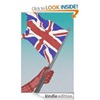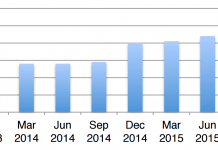 On FutureBook, Robin Harvie of publisher Aurum Press has a brief post talking about “how things got better for e-book only publishing.” He’s discussing a 26,000-word e-book publication, Things Can Only Get Bitter: The Lost Generation of 1992, about the watershed 1992 Tory victory in UK elections, of which this month year marks the 20th anniversary:
On FutureBook, Robin Harvie of publisher Aurum Press has a brief post talking about “how things got better for e-book only publishing.” He’s discussing a 26,000-word e-book publication, Things Can Only Get Bitter: The Lost Generation of 1992, about the watershed 1992 Tory victory in UK elections, of which this month year marks the 20th anniversary:
It may be a coincidence, but in the same week that it was announced that Century had bought 50 Shades of Grey, the surprise worldwide eBook hit, the emails started landing in our Camden office. The New Statesman agreed to do a four-figure deal for serial of Things Can Only Get Bitter. And they were going to put it on the cover. Start the Week wanted to build a programme on the election anniversary around the eBook. There were radio interview request, lead reviews confirmed. People were taking this publication seriously.
For all that, though, the article really doesn’t have much to say about how things got better for e-book publishing—it just mentions (and marvels at) the fact that they have. E-book-only publication is finally being seen as a legitimate way to publish works that are too short for print but too long for one-off newspaper or magazine articles.
And why is that? Well, I think it’s because there are finally enough “chickens,” in the form of e-book devices in the hands of the general public, that the “eggs” of e-books aimed directly at them have become worthwhile. And there have also been people in the last few years who were willing to break out of the mold of standard book-length publications and try new things. E-books, after all, aren’t limited by the width of the spine, but by what people are willing to buy.
































